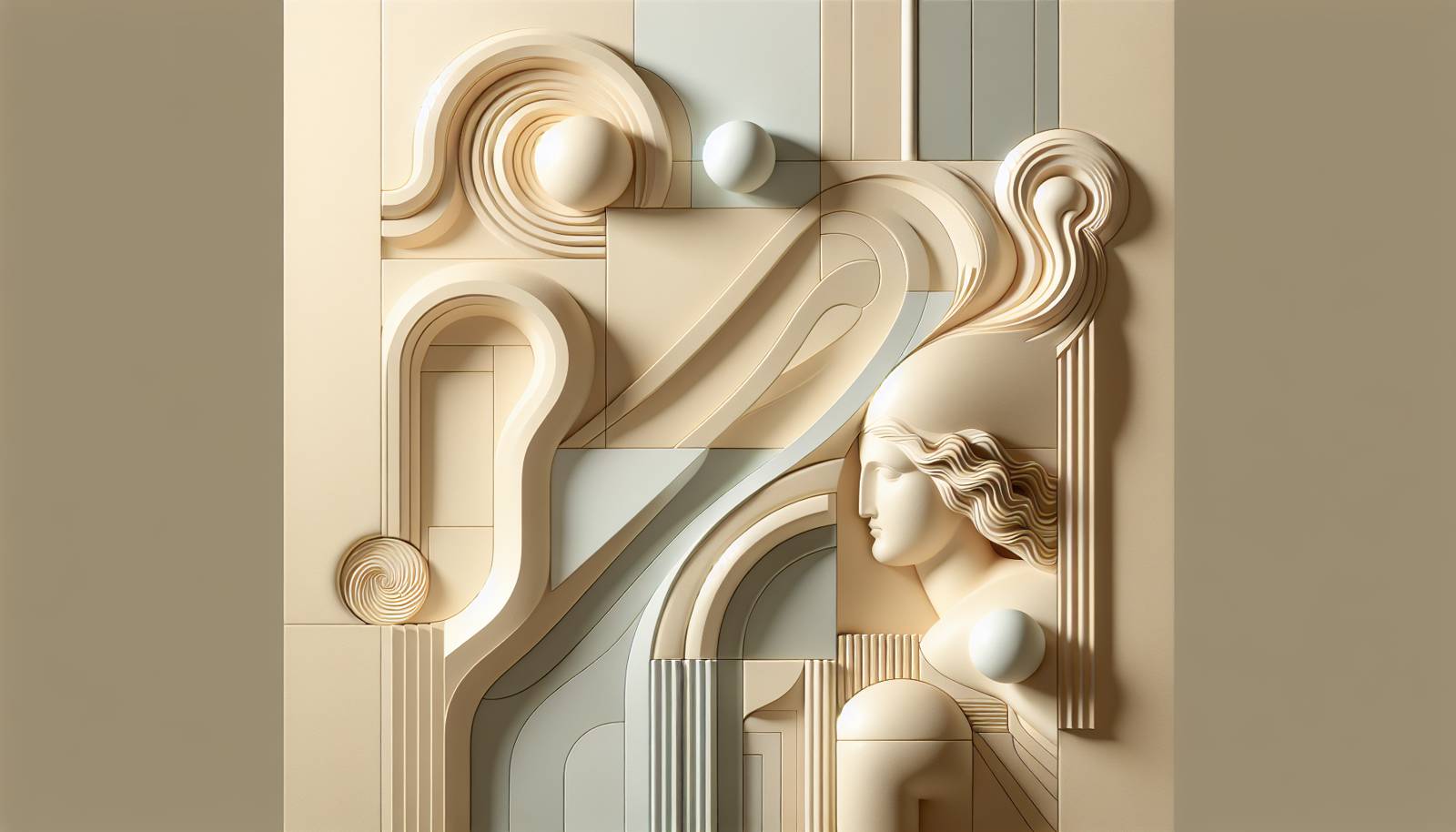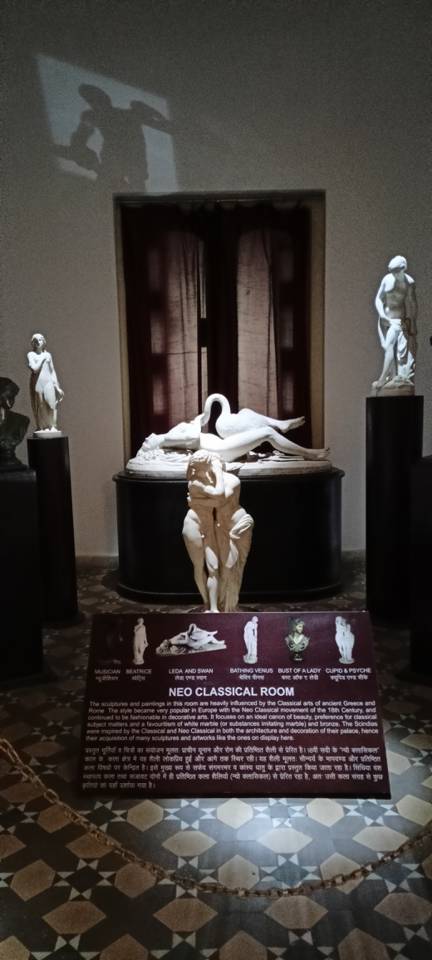
FAQ About The Influence of Neo-Classical Sculpture on Modern Art

What is Neo-Classical sculpture?
Neo-Classical sculpture is an artistic style that emerged in the mid-18th century as a reaction to the ornate Rococo style. It sought to return to the classical ideals of ancient Greece and Rome, emphasizing simplicity, symmetry, and beauty. Neo-classical sculptures often depict mythological subjects or notable historical figures, featuring idealized forms and a focus on clarity and harmony.

How did Neo-Classical sculpture influence modern art?
Neo-Classical sculpture influenced modern art by reintroducing classical aesthetics and techniques that artists continue to draw upon today. This influence is evident in the emphasis on form, proportion, and the representation of the human figure. The simplicity and elegance of Neo-Classical sculpture have inspired modern minimalist and abstract art movements, with contemporary artists sometimes borrowing its themes and visual language.

Who are the prominent artists associated with Neo-Classical sculpture?
Some prominent Neo-Classical sculptors include Antonio Canova, Johann Gottfried Schadow, and Bertel Thorvaldsen. These artists are renowned for their mastery in creating works that exemplify the elegance and refined aesthetic of Neo-Classical style. Canova, in particular, is celebrated for his sculptures such as "Psyche Revived by Cupid's Kiss" that resonate with classical beauty and emotional depth.

What techniques were used in Neo-Classical sculpture that are still relevant today?
Neo-Classical sculptors employed techniques such as direct carving and casting, focusing on realism and ideal proportions which are still relevant in contemporary sculpture. These techniques inform modern practices in material use and body representation, inspiring artists to balance realism with abstract expression. The study and emulation of timeless themes from Neo-Classical sculpture also continue to influence contemporary art education.

In what ways do modern artists reinterpret themes from Neo-Classical sculpture?
Modern artists reinterpret themes from Neo-Classical sculpture by infusing contemporary contexts and diverse cultural meanings into them. They often explore timeless subjects such as mythology, politics, and identity through a modern lens, using new materials and techniques to reflect current societal norms and personal narratives. By doing so, they establish a dialogue between the past and present, often challenging traditional ideals embodied by Neo-Classical art.

Are there any modern art movements that were directly influenced by Neo-Classical sculpture?
Several modern art movements have been influenced by Neo-Classical sculpture, including the Art Deco and Minimalist movements. Art Deco borrowed heavily from classical motifs, integrating geometric forms and clean lines reminiscent of Neo-Classical design. Minimalism also mirrors the Neo-Classical ideals of simplicity and form, though it departs by focusing on abstraction rather than representation.

What role does the human figure play in Neo-Classical and modern sculpture?
The human figure plays a central role in both Neo-Classical and modern sculpture, serving as a canvas for exploring beauty, emotion, and identity. In Neo-Classical art, the human form is idealized, often depicted in dynamic poses inspired by ancient Greek and Roman sculpture. Modern sculpture, while sometimes embracing this idealization, also explores abstraction and fragmentation, reflecting contemporary concerns about the human condition.

How do contemporary artists use materials differently compared to Neo-Classical sculptors?
Contemporary artists often utilize a diverse range of materials, such as metal, plastic, and digital media, which contrast with the traditional stone and bronze used by Neo-Classical sculptors. This shift allows modern artists to experiment with texture, form, and interactivity. While Neo-Classical art focused on the permanence and refinement of materials, contemporary works often emphasize transience and innovation.

Can you provide examples of modern works directly influenced by Neo-Classical sculpture?
Modern works such as Jeff Koons' "Balloon Dog" series and Marc Quinn's "Alison Lapper Pregnant" reflect influences from Neo-Classical sculpture. Koons' works echo the ideas of form and proportion, though with a playful contemporary twist and different materials. Quinn's sculpture, exhibited in Trafalgar Square, challenges traditional ideals by displaying a contemporary figure reminiscent of classical forms.

What are some key characteristics of Neo-Classical sculpture that appeal to modern artists?
Key characteristics of Neo-Classical sculpture that appeal to modern artists include its emphasis on balance, symmetry, and harmony. These elements are foundational for crafting aesthetic appeal and are often adapted or reinterpreted in modern compositions to create works that resonate with viewers through familiarity and innovation. Additionally, the symbolic use of mythological and historical themes provides rich storytelling opportunities.

Is there a difference between how Neo-Classical and modern sculptures are displayed in galleries?
Yes, there is a difference in how Neo-Classical and modern sculptures are displayed. Neo-Classical sculptures are typically presented as stand-alone pieces in traditional gallery settings where the focus is on the viewing of the sculptural form. Modern sculptures, however, may be part of interactive or multimedia installations, where they are contextualized within a broader narrative or conceptual framework that engages viewers through varied sensory experiences.

How has Neo-Classical sculpture impacted public monuments in the modern era?
Neo-Classical sculpture has significantly impacted the design and approach to public monuments, influencing their aesthetics and symbolic meaning into the modern era. Many public memorials and statues utilize Neo-Classical motifs such as classical figures and architecture, imbuing them with a sense of timelessness and gravitas. Modern public art often incorporates these elements but may include contemporary aspects such as modern figures or abstract designs to reflect current events or cultural shifts.

Are there any misconceptions about the influence of Neo-Classical sculpture on modern art?
A common misconception is that Neo-Classical sculpture's influence on modern art is limited to historical replication of styles. However, its impact is far-reaching, affecting conceptual and thematic elements in modern and contemporary art. Neo-Classical ideals often inspire emerging artists to explore classical themes in innovative ways, thus bridging past traditions with modern expression and technology.

What makes Neo-Classical sculpture distinct from other art movements?
Neo-Classical sculpture is distinct due to its commitment to the revival of classical Greek and Roman aesthetics, emphasizing clarity, order, and restrained emotion. It contrasts with the ornate and dramatic styles of preceding movements such as Baroque and Rococo, favoring instead a return to simplicity and idealized beauty. Its influence is notable in the way it promotes timeless, universal themes and aesthetics that continue to resonate in modern art.

Do any modern sculptors still create works in the Neo-Classical style?
Yes, some modern sculptors still create works in the Neo-Classical style, consciously reflecting its ideals and techniques. Artists like Frederick Hart and Richard MacDonald have drawn upon Neo-Classical inspiration to produce contemporary works that celebrate the human form with precision and grace. They incorporate classical themes and aesthetics to create art that pays homage to the past while resonating with today's audiences.

How does digital technology influence modern interpretations of Neo-Classical sculpture?
Digital technology has expanded the ways Modern artists can interpret Neo-Classical sculpture by allowing for new forms of expression and interaction. 3D modeling and printing enable artists to experiment with classical forms in dynamic ways that are not possible with traditional materials. Furthermore, digital art installations can incorporate motion and interactivity, creating immersive experiences that reinterpret classical aesthetics for the digital age.

What are some challenges modern artists face when drawing inspiration from Neo-Classical sculpture?
Modern artists face challenges such as bridging the gap between classical aesthetics and contemporary social issues. The interpretation of universal themes through a modern lens requires balancing respect for tradition with the need for new forms of expression and meaning. Additionally, they must navigate the potential for cultural misinterpretation and ensure their works resonate with diverse audiences in a rapidly changing cultural landscape.

How does public perception of Neo-Classical sculpture differ today compared to its original context?
Public perception of Neo-Classical sculpture today often incorporates a view of it as both a historical artifact and a source of aesthetic inspiration. Originally, Neo-Classical works were seen as symbols of Enlightenment ideals and national pride. Today, they are appreciated for their artistic value and are often critiqued or reinterpreted to reflect modern values and perspectives, addressing issues of inclusion and representation.

Can Neo-Classical sculpture be integrated into modern architecture?
Yes, Neo-Classical sculpture can be integrated into modern architecture through the incorporation of classical motifs and detailing within contemporary structures. This practice can enhance architectural design by providing a sense of continuity and historical depth. Examples include using classical columns, friezes, and statues to complement modern materials like glass and steel, often seen in civic and cultural buildings.

Is there a global interest in Neo-Classical sculpture in contemporary art forms?
There is indeed a global interest in Neo-Classical sculpture, evidenced by ongoing exhibitions and incorporation into contemporary art. Artists worldwide continue to explore and reinterpret Neo-Classical themes, reflecting diverse cultural perspectives. This interest is partly driven by an appreciation for classical art's timeless nature and also as a means to engage with global historical narratives within a modern context.
